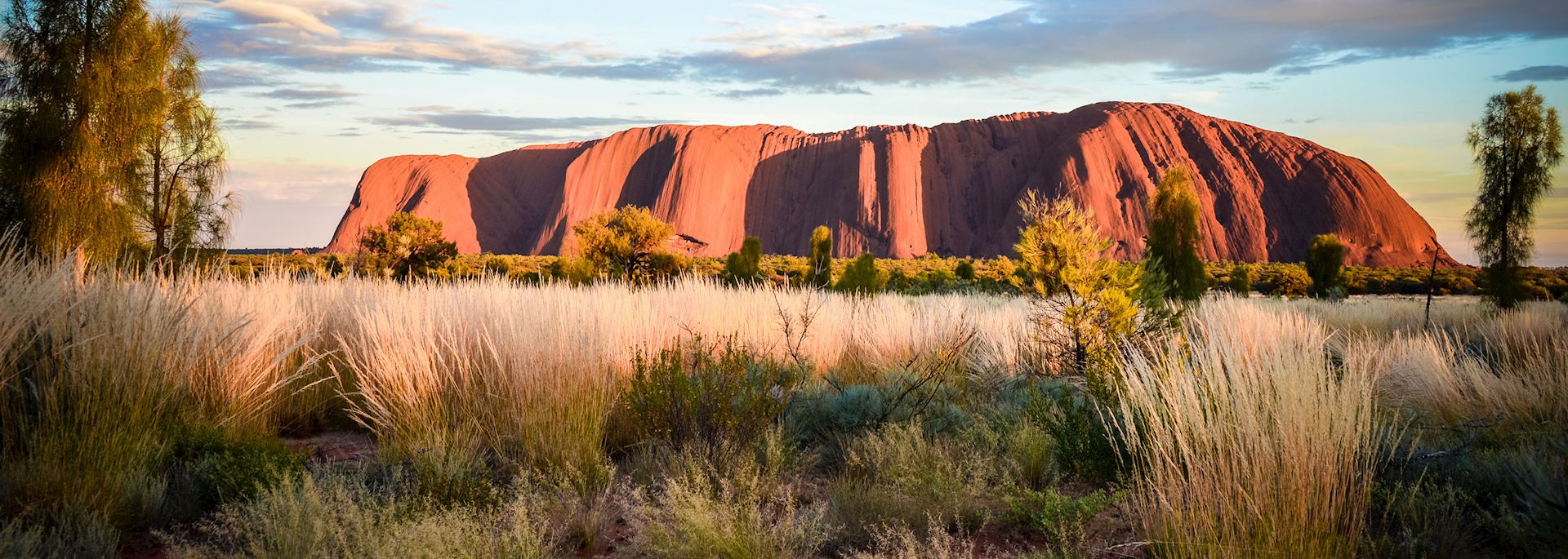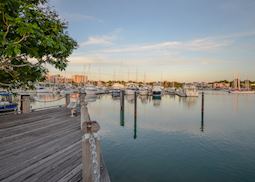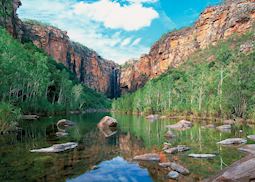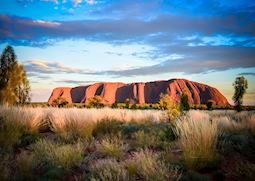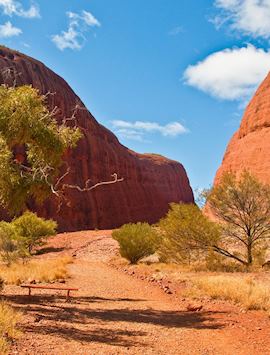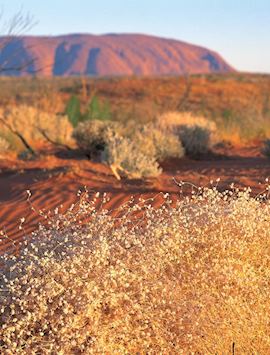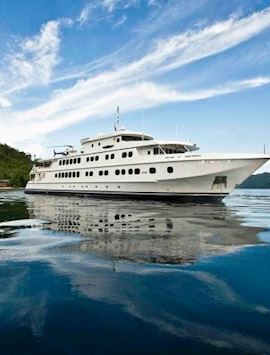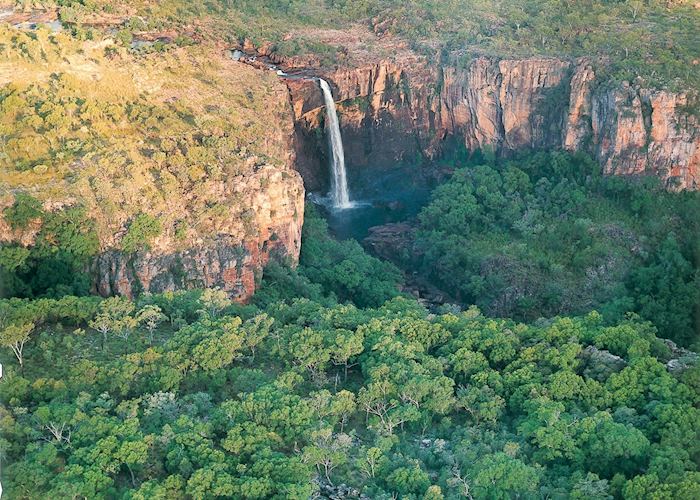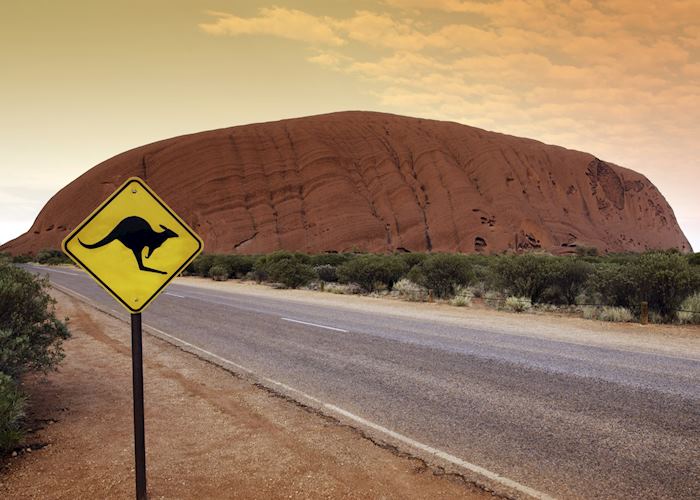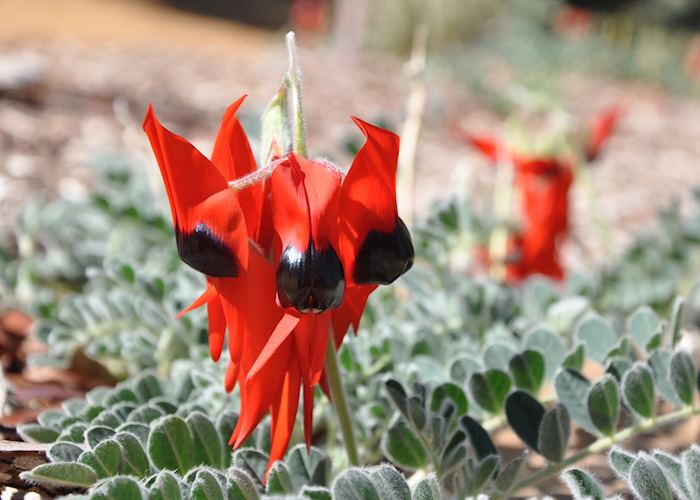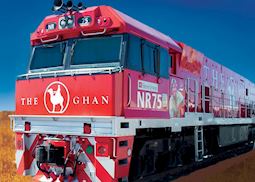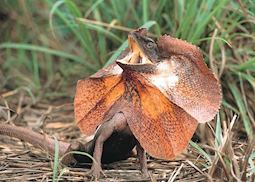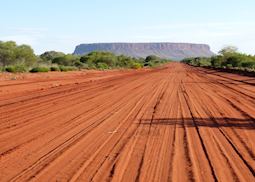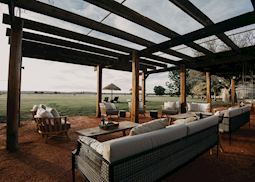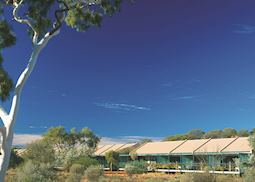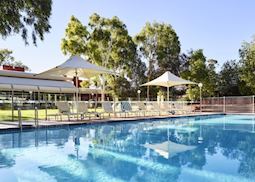Jump to:
If, for you, Australia is synonymous with the Outback, the Northern Territory is everything you’ve been envisaging and more. Beyond the city of Darwin and idiosyncratic frontier towns like Alice Springs and Katherine, it’s a fissured, unforgiving land of bronzed earth. Our specialists will show you how you can experience the Northern Territory at its purest. They’ll suggest ways you can journey beyond Uluru (rewarding though it is) and tap into an even wilder Outback.
You could go walkabout on hiking trails in Nitmiluk National Park. Aboriginal culture is at its richest in the Northern Territory, and you can examine sacred rock art sites in Arnhem Land, only accessible via a permit from its Aboriginal custodians. Would-be ranchers can join in with mustering cattle at the Bullo River Station (which you reach by plane). And, the landscapes here are far from arid. On a holiday in the Northern Territory, you could cruise the ‘yellow water’ floodplains of Kakadu National Park in search of salties (saltwater crocodiles), explore the rainforest and natural pools of Litchfield National Park, or trek to the so-called ‘Garden of Eden’ that is Kings Canyon and Watarrka National Park.
who's been there

Start planning your tailor-made trip to Northern Territory by contacting one of our Australia specialists
-
01993 838 92501993 838 895
- Make an enquiry
Places to visit in Northern Territory
Featuring heavily on our experiences of visiting Northern Territory, these selected places are destinations that also prove consistently popular with our travellers. Our specialists can help you choose how to include them in your wider trip, based on your preferences.
Suggested itineraries featuring Northern Territory
Our itineraries will give you suggestions for what is possible when you travel in Northern Territory, and they showcase routes we know work particularly well. Treat them as inspiration, because your trip will be created uniquely by one of our specialists.
Places in and around Northern Territory
- Alice Springs Northern Territory
- Arnhem Land Northern Territory
- Bamurru Plains Northern Territory
- Bullo River Station Northern Territory
- Cobourg Peninsula Northern Territory
- Darwin Northern Territory
- Kakadu National Park Northern Territory
- Katherine Northern Territory
- Kings Canyon & Watarrka National Park Northern Territory
- Litchfield National Park Northern Territory
- The MacDonnell Ranges Northern Territory
- Nitmiluk National Park Northern Territory
- Uluru-Kata Tjuta National Park Northern Territory
Photos of Northern Territory
Our expert guides to exploring Northern Territory
Written by our specialists from their own experiences of visiting Northern Territory, these guides will help you make the most of your time there. We share both our practical recommendations and the best ways to appreciate Northern Territory at its best.
-
Classic railway journeys in Australia: The Ghan vs the Indian Pacific ![The Ghan, Darwin]()
Classic railway journeys in Australia: The Ghan vs the Indian Pacific
Classic railway journeys in Australia: The Ghan vs the Indian Pacific
Australia by train? Yes: the country hosts two of the world’s greatest routes, The Ghan and the Indian Pacific. But, what are the differences between them? Our specialists explain. Either way, expect Outback scenery and great on-board dining and hospitality.
Read this guide -
Australia's top 10 nature experiences ![Frilled Neck Lizard, Kakadu National Park]()
Australia's top 10 nature experiences
Australia's top 10 nature experiences
From mountain ranges to ferny forests and coral reefs, Australia has more than its fair share of natural wonders. We’ve picked ten of the best for you to experience, and share our tips for making the most of your trip.
Read this guide -
Central & Outback Australia ![Mount Conner, Australia]()
Central & Outback Australia
Central & Outback Australia
The centre of Aboriginal Australia, the Outback and central Australia take in Alice Springs, Uluru and some of the country's most intriguing wildlife. Our specialists will suggest the best places to visit and stay in the region where red earth glows against a blue sky.
Read this guide
Accommodation choices for Northern Territory
We've selected a range of accommodation options for when you visit Northern Territory. Our choices usually come recommended for their character, facilities and service or location. Our specialists always aim to suggest properties that match your preferences.
-
![Cicada Lodge, Nitmiluk National Park (Katherine)]()
Cicada Lodge
Katherine -
![Outdoor lounging at Bullo River Station]()
Bullo River Station
Bullo River Station -
![Davidson's Arnhemland Safaris, Arnhem Land]()
Davidson's Arnhemland Safaris
Arnhem Land -
![Bamurru Plains Lodge, Bamurru Plains]()
Bamurru Plains
Bamurru Plains -
![Kings Canyon Resort, Kings Canyon]()
Discovery Resorts - Kings Canyon
Kings Canyon & Watarrka National Park -
![Cooinda Lodge]()
Cooinda Lodge Kakadu
Kakadu National Park -
![Waterlillies, Yellow Waters]()
Mercure Kakadu Crocodile Hotel
Kakadu National Park -
![Sails in the Desert, Uluru/Ayers Rock]()
Sails in the Desert
Uluru-Kata Tjuta National Park -
![Longitude 131]()
Longitude 131°
Uluru-Kata Tjuta National Park -
![Desert Gardens Pool]()
Desert Gardens Hotel
Uluru-Kata Tjuta National Park

